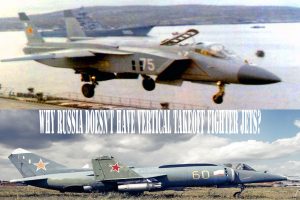fighterjetsworld
MEMBER
open link to read full article
https://fighterjetsworld.com/2018/02/22/why-russia-doesnt-have-vertical-takeoff-fighter-jets/
Soviet Union have developed its own jump jets and fielded them on its first aircraft carriers. It even dispatched a few for combat flights in Afghanistan. Even stranger, the design DNA of the Russian jump jets ended up in the most expensive weapons program in history, the F-35 Joint Strike Fighter. The reasons why it abandoned the troublesome aircraft a quarter century ago point to the problems inherent to VTOL jet technology.
The Soviet Union began experimenting with VTOL technology in the 1950s with a bizarre test rig called the Turbolet and a crane conductor’s cab. It mounted an RD-9BL turbojet engine, taken from a MiG-19, oriented downwards to provide vertical thrust, while four directional thrusters on the arms were used for maneuvering. Though it could hover around on its jets like helicopter, the Turbolet didn’t have a proper horizontal-thrust flight mode.

https://fighterjetsworld.com/2018/02/22/why-russia-doesnt-have-vertical-takeoff-fighter-jets/
Soviet Union have developed its own jump jets and fielded them on its first aircraft carriers. It even dispatched a few for combat flights in Afghanistan. Even stranger, the design DNA of the Russian jump jets ended up in the most expensive weapons program in history, the F-35 Joint Strike Fighter. The reasons why it abandoned the troublesome aircraft a quarter century ago point to the problems inherent to VTOL jet technology.
The Soviet Union began experimenting with VTOL technology in the 1950s with a bizarre test rig called the Turbolet and a crane conductor’s cab. It mounted an RD-9BL turbojet engine, taken from a MiG-19, oriented downwards to provide vertical thrust, while four directional thrusters on the arms were used for maneuvering. Though it could hover around on its jets like helicopter, the Turbolet didn’t have a proper horizontal-thrust flight mode.

